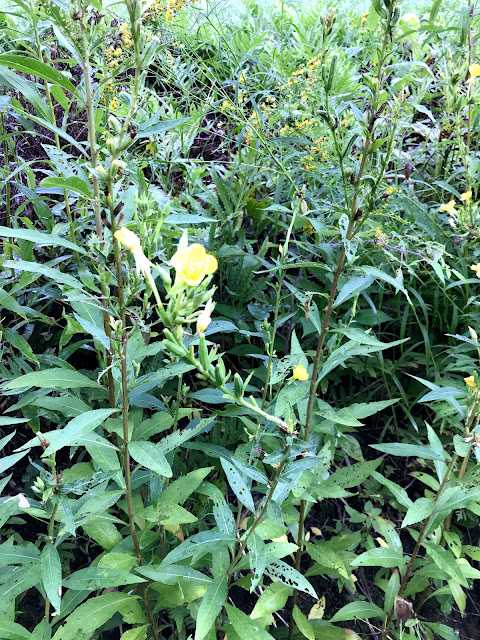I know I've mentioned before that Allyn and I walk "around the block" here on most days. It's a little over four miles, mostly on dirt roads through forests and fields. Lost of time to observe and ruminate, maybe too much. You see most of the way around is bordered by low spots and ditches. These areas lie between the road and fields that have been cut in some fashion.
It has occurred to me that these areas are literally no man's lands, as opposed to the areas on either side. These areas receive no TLC for the most part and therefore are a world unto themselves. All manner of flora battle for survival in these areas, aggressive and hardy plants like burdock, poison parsnip, and goldenrod. But there are beautiful species that are able to claw out an existence as well.
Evening Primrose
Jewelweed
Turtleheads
It is heartbreaking to see a field brush hogged these days. Just think of all the monarch caterpillars that are never going to turn into butterflies. This never happens with the monarchs that locate their eggs on milkweed in most roadside ditches. This might seem like the least consequential phenomenon to consider, but it turns out I am not the only one.
"The shrinkage in the flora is due to a combination of clean-farming, woodlot grazing and good roads...There are idle spots on every farm and every highway is bordered by an idle strip as long as it is; keep cow, plow and mower out of these idle spots, and the full native flora, plus dozens of interesting stowaways from foreign parts, could be part of the normal environment of every citizen."
July
A Sand County Almanac
Aldo Leopold




No comments:
Post a Comment